Embarking on the trek to Everest Base Camp is a bucket-list adventure that captivates the hearts of intrepid travelers. This 14-day journey traverses the iconic Himalayas, immersing trekkers in a world of breathtaking landscapes, cultural encounters, and the thrill of reaching one of the most renowned base camps on Earth. While the challenges of high altitude and rugged terrain await, the rewards of witnessing the grandeur of Mount Everest and connecting with the resilient Sherpa communities make this trek an unforgettable experience. Whether you’re seeking a physical challenge or a profound connection with nature, the path to Everest Base Camp promises a transformative journey that will leave a lasting impression.
Key Points
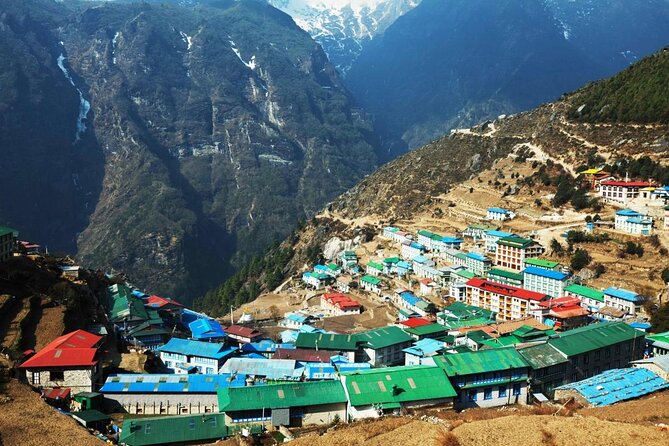
- The Everest Base Camp trek is a popular high-altitude journey of 14 days, starting from Kathmandu and reaching an altitude of over 5,000 meters.
- The trek features diverse landscapes, including lush forests, rugged terrain, and snow-capped peaks, offering breathtaking views of Mount Everest and the surrounding Himalayan range.
- Proper acclimatization is crucial, with several rest days in key stops like Namche Bazaar and Dingboche to help trekkers adjust to the high altitude.
- The highlight of the trek is reaching the Everest Base Camp (5,364 meters) and the optional hike to Kala Patthar (5,545 meters) for panoramic views of the Everest massif.
- The return journey retraces the steps through the stunning landscapes, allowing trekkers to celebrate their successful expedition before departing from Kathmandu.
Everest Base Camp Trek Overview
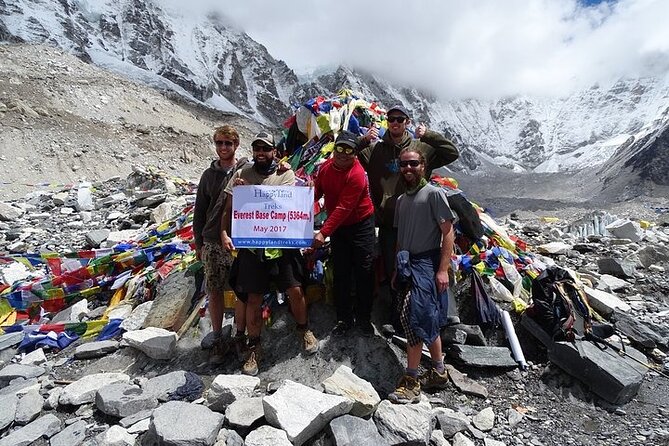
The Everest Base Camp Trek is a popular high-altitude trek that exceeds 5000 meters in elevation. This 14-day journey starts in Kathmandu, offering a scenic flight to Lukla before trekking through diverse landscapes.
Highlights include acclimatization days and reaching the legendary Everest Base Camp at 5364 meters. The daily itinerary covers stops at Phakding, Namche Bazaar, Tengboche, Dingboche, Lobuche, Gorakshep, and Pangboche.
Trekkers face challenges like rocky terrain, icefalls, and high altitude but are rewarded with panoramic views of Mount Everest and the surrounding peaks.
The return journey celebrates the successful expedition before the final flight back to Kathmandu.
Ready to hit more trails? More hiking adventures we feature in Kathmandu
Itinerary and Route Details
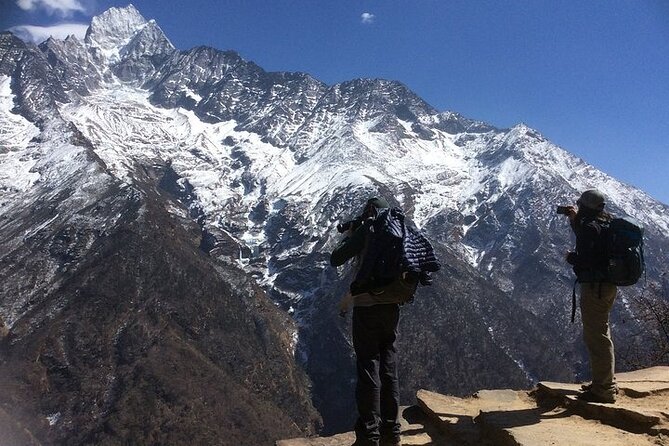
On the Everest Base Camp Trek, trekkers embark on a 14-day journey that begins with a scenic flight from Kathmandu to the small town of Lukla, situated at an elevation of 2800 meters.
The trek then progresses through diverse landscapes, with stops at notable destinations like Namche Bazaar, Tengboche, Dingboche, and Lobuche. Acclimatization days are crucial, allowing trekkers to adjust to the high altitudes.
The highlights include:
- Reaching Everest Base Camp at 5364 meters.
- Enjoying panoramic views from Kala Patthar.
- Traversing rocky terrain, icefalls, and challenging high-altitude conditions.
- Celebrating the successful expedition upon returning to Namche Bazaar and Lukla.
Arrival and Scenic Flight to Lukla
When trekkers embark on the Everest Base Camp journey, they begin with a scenic flight from Kathmandu to the small town of Lukla, situated at an elevation of 2800 meters.
This 30-minute flight offers spectacular views of the Himalayas, including glimpses of Everest herself.
Upon landing at Lukla’s tiny airport, the real trek begins. Trekkers must navigate the steep, rocky terrain as they make their way to Phakding, their first overnight stop.
The trek from Lukla to Phakding covers a distance of 8 kilometers and takes around 3-4 hours to complete, setting the stage for the challenging days ahead.
Acclimatization and Viewpoints
After trekkers have covered the initial distance from Lukla to Phakding, they’ll need to carefully manage their ascent to properly acclimate their bodies to the increasing altitude.
The trek includes several acclimatization days, allowing hikers to rest and explore the surroundings. These include:
- A rest day in Namche Bazaar to adjust to the higher elevation.
- An optional hike to the Everest viewpoint for panoramic vistas.
- An acclimatization day in Dingboche to prepare for the challenging ascent ahead.
- An early morning hike to Kalapathar (5545m) for breathtaking views of Mount Everest and the surrounding peaks.
Proper acclimatization is crucial for a safe and successful trek to Everest Base Camp.
Trekking Through Diverse Landscapes
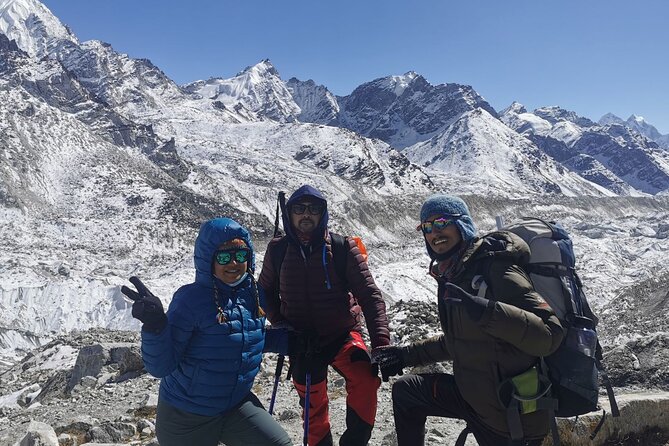
The trek from Lukla to Everest Base Camp takes trekkers through an enchanting tapestry of diverse landscapes, each offering its own captivating charm.
From the lush forests and deep valleys of the lower altitudes to the stark, rugged terrain of the higher elevations, the journey is a feast for the senses.
Trekkers will witness the gradual transition from verdant meadows to snow-capped peaks, with each step revealing a new perspective on the awe-inspiring Himalayan scenery.
The trail winds through quaint Sherpa villages, crosses rushing streams, and ascends heart-pounding switchbacks, providing a truly immersive experience in the majesty of the Everest region.
Reaching Everest Base Camp
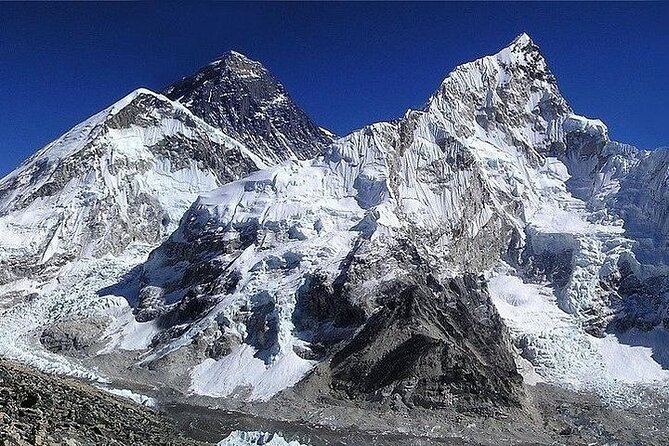
The final leg of the Everest Base Camp trek takes trekkers on a challenging ascent through the stark, high-altitude terrain of the Khumbu Glacier. Reaching the base camp requires negotiating rocky trails, icy slopes, and treacherous conditions.
The journey includes four key stages:
- Trekking from Lobuche to Gorakshep, the final settlement before the base camp.
- Hiking to Everest Base Camp, a grueling 5-6 hour trek on rugged terrain.
- Enjoying the spectacular views of Everest and the surrounding peaks from the base camp.
- Ascending Kala Patthar (5,545m) for breathtaking panoramic vistas of the entire Everest massif.
Completing this iconic trek is a true mountaineering accomplishment, rewarding trekkers with unforgettable memories and a deep appreciation for the grandeur of the Himalayas.
Challenges and Breathtaking Vistas
Trekking to Everest Base Camp presents numerous challenges, but the breathtaking vistas along the way make the arduous journey worthwhile. The rocky terrain and high altitudes test trekkers’ endurance, while navigation through icy landscapes adds an element of danger. However, the panoramic views of towering peaks, serene glaciers, and vibrant Sherpa villages offer a profound sense of accomplishment. At the highest point, the hike to Kalapathar (5545m) rewards climbers with a stunning panorama of Everest and surrounding giants. The diverse landscapes, from lush forests to barren moraine, showcase the incredible beauty of the Himalayas.
| Challenge | Elevation (m) | Scenery |
|---|---|---|
| Rocky Terrain | 4900+ | Towering Peaks |
| Icefalls | 5000+ | Serene Glaciers |
| High Altitude | 5545 | Vibrant Villages |
Return Journey and Celebration
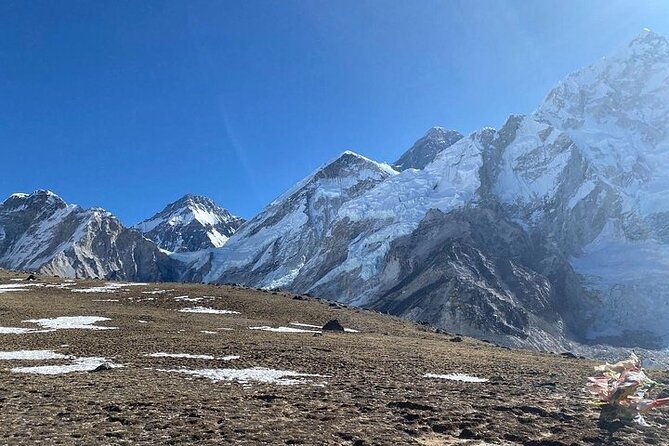
After reaching the Everest Base Camp, trekkers embark on the return journey, retracing their steps through the stunning landscapes. The descent takes them back through villages, with opportunities to revisit favorite stops and savor the views one last time.
The return trek includes:
- Trekking from Pangboche to Namche Bazaar, a familiar yet rewarding route.
- Descending from Namche to Lukla, the final leg before the flight back to Kathmandu.
- Celebrating the successful expedition with fellow trekkers and local guides.
- Enjoying free time in Kathmandu to explore the vibrant city before departing.
The return journey allows trekkers to fully appreciate the remarkable Everest Base Camp experience.
Frequently Asked Questions
What Is the Best Time of Year to Do the Everest Base Camp Trek?
The best time for the Everest Base Camp trek is typically between March-May and September-November when the weather is mild, skies are clear, and the trails are less crowded, offering an optimal trekking experience.
How Difficult Is the Everest Base Camp Trek Overall?
The Everest Base Camp trek is moderately challenging, requiring a good fitness level and proper acclimatization. The high altitudes, steep ascents, and rocky terrain can be strenuous, but the stunning mountain scenery and sense of accomplishment make it a rewarding experience.
What Kind of Training Should I Do to Prepare for the Trek?
To prepare for the Everest Base Camp trek, one should focus on cardio exercises, strength training, and hiking with a weighted backpack. Proper acclimatization during the trek is also crucial to manage the high altitude conditions.
What Is the Typical Group Size for the Everest Base Camp Trek?
The typical group size for the Everest Base Camp trek is around 6-12 participants. Group sizes can vary depending on the trekking company, but this range allows for a more personalized experience while maintaining logistical efficiency on the trail.
What Are the Weather Conditions Like During the Everest Base Camp Trek?
The weather conditions during the Everest Base Camp trek are generally cool and dry, with temperatures ranging from chilly nights to mild days. Trekkers should prepare for changing conditions, including potential snowfall at higher elevations.
Recap
The trek to Everest Base Camp is a once-in-a-lifetime adventure that challenges trekkers with high altitudes and rugged terrain. But the reward is unparalleled – reaching the iconic base camp at the foot of the world’s highest mountain and being awestruck by the breathtaking Himalayan vistas. It’s an unforgettable journey that leaves trekkers with a profound sense of accomplishment and a deep appreciation for the wonders of this magnificent region.
More Hiking & Trekking Tours in Kathmandu
More Tour Reviews in Kathmandu
Not for you? Here's more things to do in Kathmandu we have recnetly reviewed
- 2 Best Guided Tours In Jagat
- 20 Best 2 Day Tours In Kathmandu
- 20 Best 3 Day Tours In Kathmandu
- 20 Best 4 Day Tours In Kathmandu
- 8 Best Dining Experiences In Kathmandu
- 20 Best Full-Day Tours In Kathmandu
- 25 Best Helicopter Flights And Tours In Kathmandu
- 25 Best Helicopter Flights And Tours In Kathmandu
- 13 Best Massage And Relaxation Services In Kathmandu
- 5 Best Photography Experiences In Kathmandu
- 8 Best Dinner Tours In Kathmandu
- 17 Best Lunch Experiences In Kathmandu
